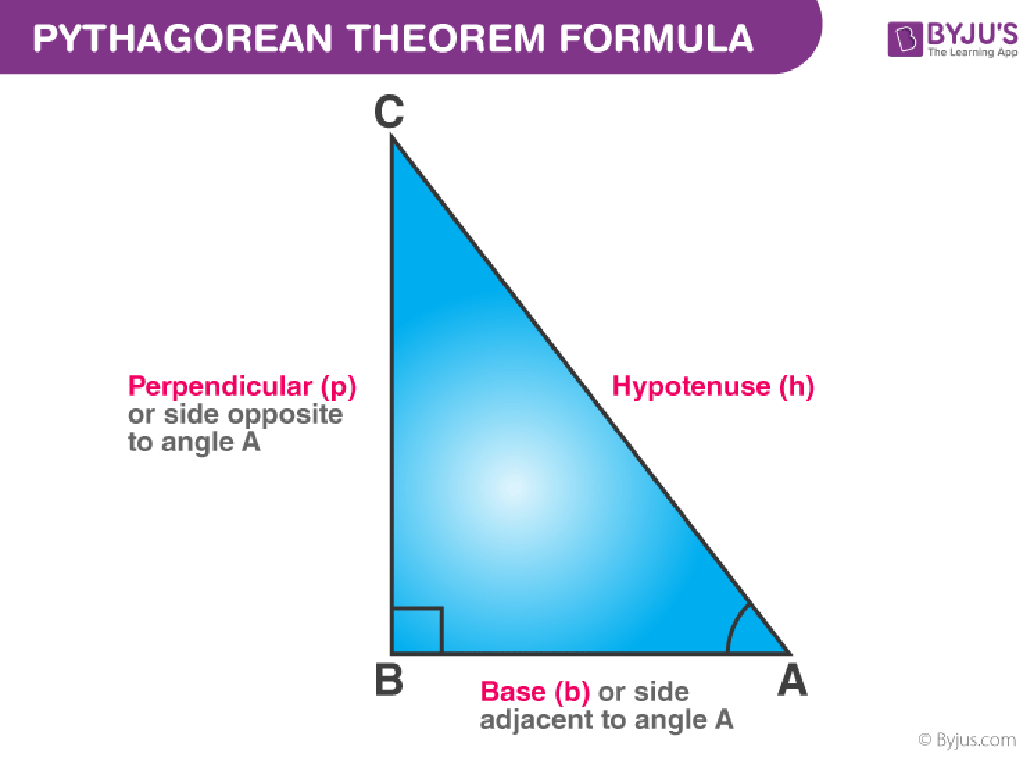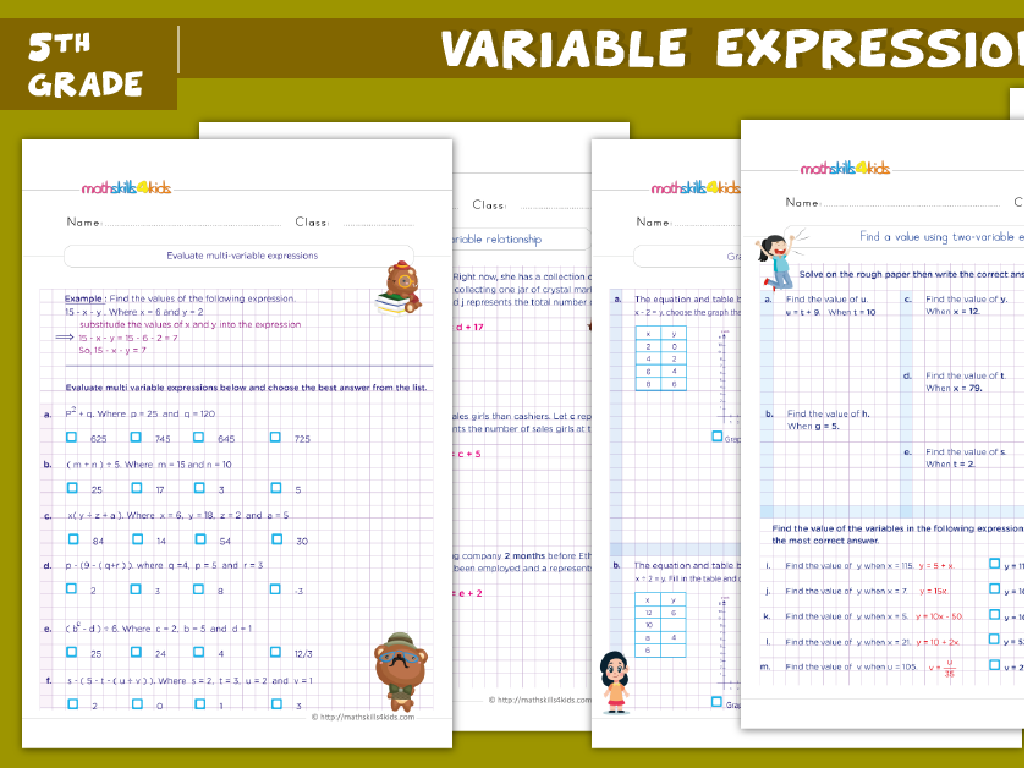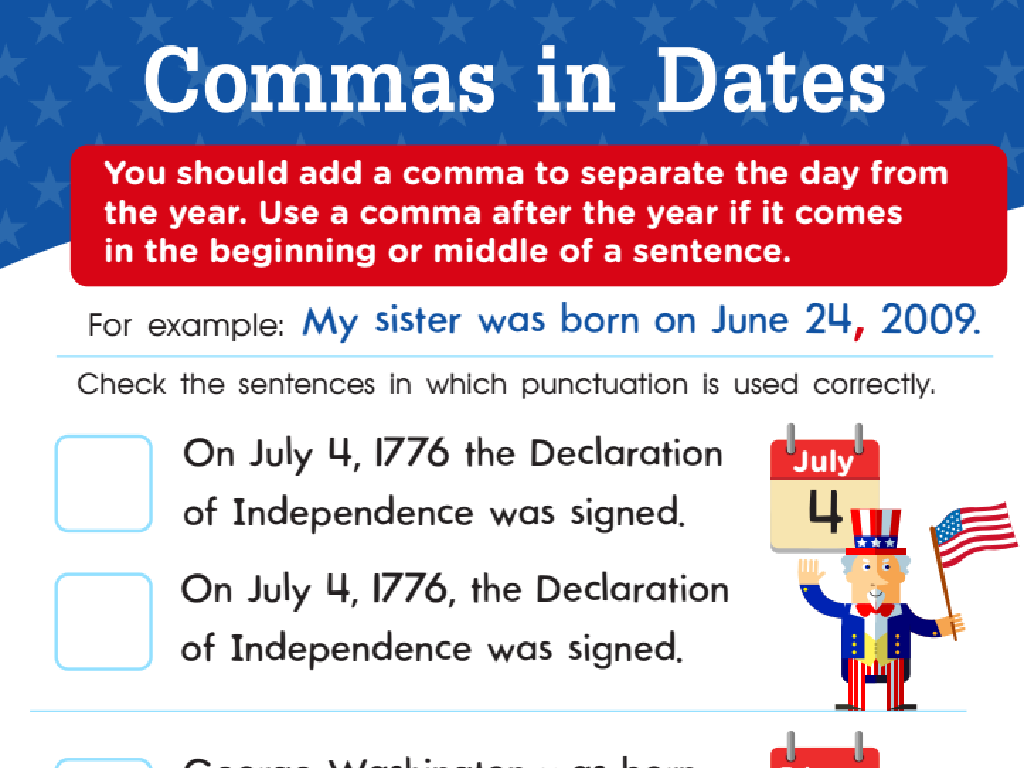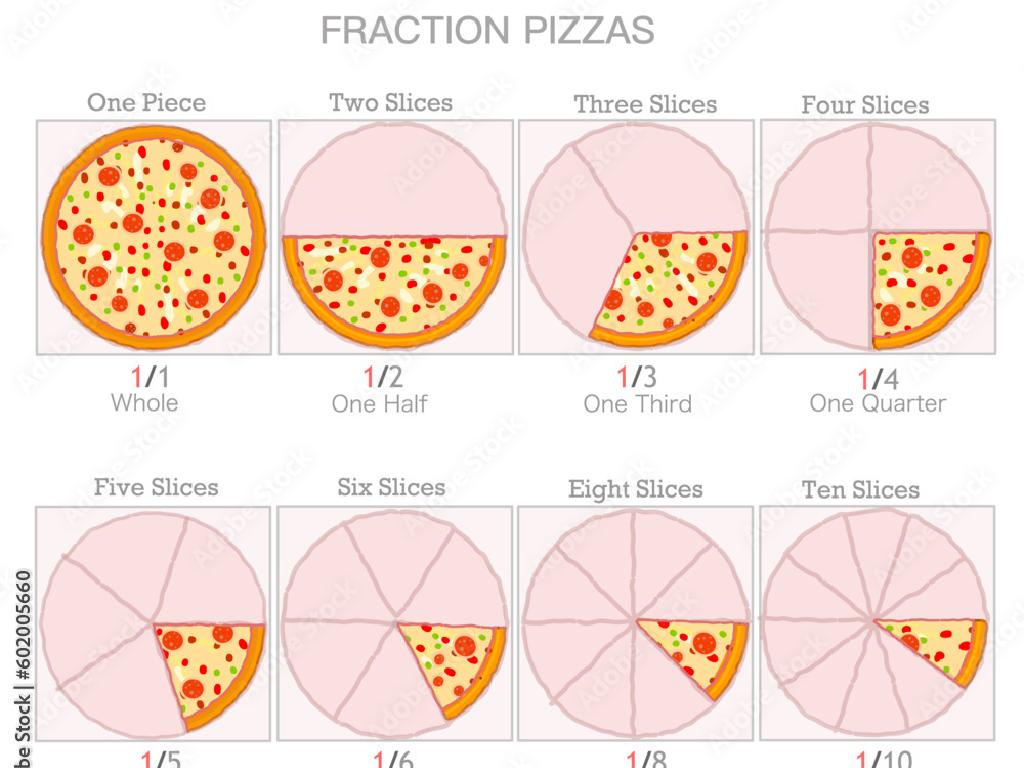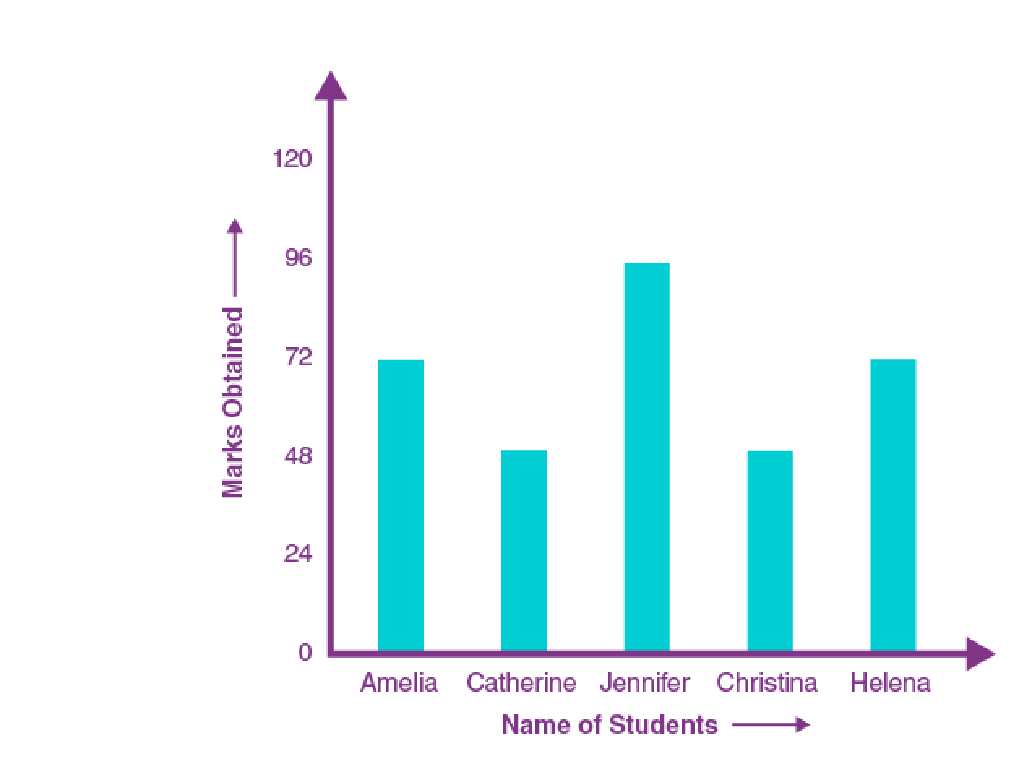Convert Customary Units Involving Fractions
Subject: Math
Grade: Fifth grade
Topic: Customary Units Of Measurement
Please LOG IN to download the presentation. Access is available to registered users only.
View More Content
Welcome to Customary Units!
– Understanding customary units
– Units like inches and feet measure length
– Importance of measurement
– To accurately describe and compare objects
– Examples: inches, feet, yards, miles
– Smaller to larger: 12 inches in a foot, 3 feet in a yard
– Converting units with fractions
– Use fractions to show parts of a unit, like 1/2 foot
|
This slide introduces students to the concept of customary units of measurement, which are used to quantify physical quantities in everyday life. Emphasize the importance of measurement in providing a clear communication tool for describing the size, length, or amount of something. Use tangible examples such as measuring the length of a pencil in inches or the distance to school in miles. Highlight the hierarchical relationship between units and demonstrate how to convert between them using fractions, such as expressing 6 inches as 1/2 foot. Encourage students to think of situations where they have used or seen these units applied, and prepare them for upcoming activities involving unit conversions.
Understanding Fractions
– Reviewing the concept of fractions
– A fraction represents a part of a whole or a division of a whole into equal parts.
– Fractions as parts of a whole
– If you cut a pizza into 4 pieces, each piece is a fraction (1/4) of the pizza.
– Everyday examples of fractions
– Examples: 1/2 of a dollar is 50 cents, 3/4 of a gallon of milk, 2/3 of an hour is 40 minutes.
|
Begin with a brief review of what fractions are, ensuring that students recall that a fraction represents a division of a whole into equal parts. Use tangible examples like slices of pizza to illustrate how fractions work in a way that is relatable to the students’ everyday experiences. Discuss how fractions are not just numbers, but they represent actual parts of something larger, which can be applied to various situations in daily life, such as money, cooking measurements, and time. This will set the stage for understanding how fractions are used in customary units of measurement, which will be covered in subsequent slides.
Converting Units: Inches, Feet, and Yards
– Learn conversion factors
– A conversion factor is a number used to change one set of units to another, by multiplying or dividing.
– Examples: inches to feet, feet to yards
– For instance, 12 inches equals 1 foot, 3 feet equals 1 yard.
– Practice: 5 feet to inches
– Use the factor 12 inches/1 foot to convert 5 feet into inches.
– Mastering simple conversions
|
This slide introduces students to the concept of conversion factors and provides simple examples for converting between inches, feet, and yards. Emphasize that understanding these basic conversions is crucial for solving measurement problems. Start by explaining what a conversion factor is and how it is used. Then, show examples of converting inches to feet and feet to yards. For the practice problem, guide students to multiply 5 feet by the conversion factor of 12 inches per foot to find the equivalent number of inches. Encourage students to work through the problem and verify their understanding. This exercise will help solidify their grasp of converting units without fractions.
Understanding Fractions in Measurements
– Reading measurements with fractions
– Learn to interpret 1/4 inch or 3/8 pound
– Significance of fractions in measurements
– Fractions allow for precision in everyday life
– Practice: Convert feet to inches
– Use multiplication to change units
– How to write 3 1/2 feet in inches
– 3 1/2 feet equals 42 inches (3 feet = 36 inches, 1/2 foot = 6 inches)
|
This slide introduces students to the concept of using fractions in customary unit measurements. Start by explaining how to read measurements that include fractions, emphasizing the importance of understanding parts of a whole in real-world contexts, such as cooking or construction. Highlight why precision is important and how fractions help achieve that. For practice, guide students through the process of converting feet to inches using fractions, starting with whole numbers and then including the fractional part. The example of 3 1/2 feet to inches will help solidify their understanding. Encourage students to practice with additional examples and ensure they grasp the concept of multiplying both the whole number and the fraction when converting units.
Converting Customary Units with Fractions
– Steps for unit conversion with fractions
– Understand the conversion factor, then multiply the fraction and simplify.
– Example: 2 1/4 yards to feet
– 2 1/4 yards equals 2*3 + 1/4*3 feet, which simplifies to 6 3/4 feet.
– Group Activity: 1 1/2 miles to yards
– Work together to convert 1 1/2 miles. Remember, 1 mile = 1760 yards.
|
This slide introduces students to the process of converting customary units involving fractions. Start by explaining the conversion factors between units, such as 1 yard = 3 feet or 1 mile = 1760 yards. Use the example to show how to multiply whole numbers and fractions by the conversion factor and then simplify the result. For the group activity, students will apply what they’ve learned to convert 1 1/2 miles to yards. Provide guidance on multiplying fractions and simplifying their answers. Possible activities include having different groups work on different conversion problems, using manipulatives to visualize the conversion, or creating a conversion chart as a class.
Conversion Tricks and Tips
– Memorize key conversion factors
– Remember: 1 foot = 12 inches, 1 yard = 3 feet
– Use multiplication/division
– To convert larger units to smaller, multiply. For smaller to larger, divide.
– Learn shortcut methods
– For instance, to quickly convert feet to inches, just multiply by 12.
– Practice with examples
|
This slide aims to equip students with handy strategies for converting customary units involving fractions. Start by encouraging them to memorize basic conversion factors, such as how many inches are in a foot or feet in a yard. Explain that multiplication is used to convert from larger to smaller units, while division is used for the opposite. Introduce shortcut methods, like multiplying by 12 to convert feet to inches quickly. Provide ample practice opportunities with examples to ensure they can apply these tips effectively. Reinforce learning with real-world problems that require unit conversions.
Let’s Practice Together: Unit Conversion
– Convert 3/4 yard to feet
– 1 yard = 3 feet, so 3/4 yard equals how many feet?
– Change 5 5/8 inches to yards
– There are 36 inches in a yard. How many yards are in 5 5/8 inches?
– Interactive Q&A session
– Solve problems as a class
|
This slide is designed for a class practice activity on converting customary units involving fractions. Start by explaining that 1 yard equals 3 feet, then guide the students to multiply 3/4 by 3 to convert yards to feet. For the second task, remind them that there are 36 inches in a yard, and they need to divide 5 5/8 inches by 36 to find the equivalent in yards. The interactive Q&A session will allow students to ask questions and solve problems together, fostering a collaborative learning environment. Prepare to walk through each step of the conversion process, and have additional similar problems ready for students who finish early or need extra practice.
Class Activity: Measurement Scavenger Hunt
– Find and measure classroom items
– Record measurements in two units
– Convert units involving fractions
– Use rulers for inches, then convert to feet or yards
– Share findings with the class
|
This interactive activity is designed to help students apply their knowledge of converting customary units in a fun and engaging way. Provide students with rulers and have them measure various items in the classroom. They should record these measurements first in the smallest unit (inches), and then convert those measurements to larger units (feet or yards), involving fractions where necessary. For example, if a book is 9 inches long, students will convert and record this as 3/4 foot. After the activity, students will present their findings to the class, explaining their conversion process. This will reinforce their understanding of measurement units and conversion between them. Possible variations of the activity could include measuring the length of the desk, the width of a textbook, or the height of a chair.
Lesson Recap & Homework
– Review of unit conversions
– We learned how to convert units like inches to feet using fractions.
– Accuracy in measurements
– Precise measurements are crucial in real-world applications.
– Homework: Conversion worksheet
– Solve problems on the worksheet to reinforce today’s lesson.
– Practice makes perfect
|
This slide aims to summarize the key points from today’s lesson on converting customary units involving fractions. Emphasize the importance of understanding how to accurately convert between units such as inches, feet, yards, and miles, especially when dealing with fractions. Highlight the real-life implications of accurate measurements in fields like construction, cooking, and science. The homework assignment is a worksheet that includes a variety of conversion problems to ensure students practice and solidify their understanding of the concepts taught. Encourage students to attempt all problems and remind them that consistent practice is essential for mastery. Provide tips for checking their work and resources for additional practice if needed.

